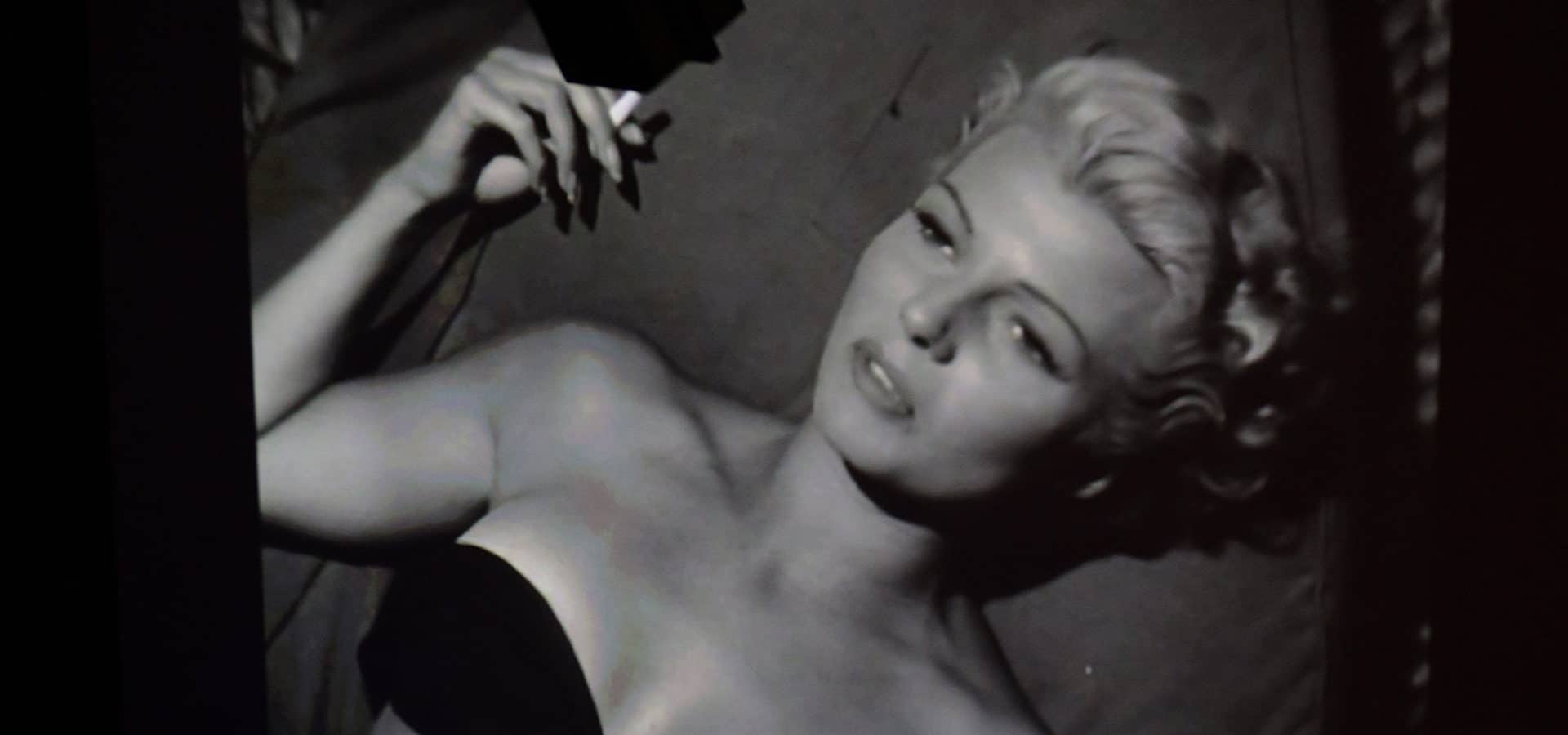New Menkes Documentary
As a filmmaker, Nina Menkes is used to being behind the camera. Lately, she’s put herself in front of the lens as the central character in the new documentary Brainwashed, which explores how camera angles, camera movement, lighting, framing, and other shot design techniques contribute to the oppression of women in Hollywood and beyond.
The film, which is supported by Tim Disney, co-founder of Uncommon Productions and chair of the CalArts Board of Trustees, is currently in post-production. The project is an outgrowth of the talk, “Sex and Power: The Visual Language of Oppression” (See “The Big Idea” in The Pool 3, 2018), which Menkes has given for many years to her students at CalArts, where she serves as faculty in the School of Film/Video. With the anger and momentum of the #MeToo movement at a fever pitch, she presented the talk at Sundance Film Festival in 2018. The powerful response told Menkes that the material needed to reach a wider audience, and the seed was planted to make it into a feature film.
The film explores how film directors from the 1940s to the present have undercut and disempowered women through “a gendered system of shot design,” says Menkes. She chose the name Brainwashed because the approaches to filming women are so ingrained that often the directors themselves don’t realize what they’re doing.
She shares an example from Sofia Coppola’s Lost in Translation, in which the opening shots introduce Scarlett Johansson and Bill Murray. With Johansson: “It’s a closeup of her butt in see-through underwear.” With Murray: “We see his face, he’s driving in a taxi, he’s coming into Tokyo, he’s looking around, he’s tired,” she says. “We get who he is, he’s a human being. Her, she’s introduced through her derriere.” That kind of underwear shot, she adds, is something we almost never see with a heterosexual male character.
The fragmented body part technique is just one of many standard techniques used in filming women, specifically. Menkes says other common devices involve fantasy lighting, body pans (often in slow motion), and a sexualized body that exists outside of the narrative flow. Even when women are playing powerful roles such as CEOs, their presence is often undercut by shot maneuvers that objectify them. And that, says Menkes, is where the danger lies.
“I believe that it teaches [viewers] to see women as sexualized objects above everything else. Being the object means that you are the use object of someone else’s pleasure. It’s not about you and your own experience,” she says. Menkes goes on to explain that this disempowerment of women is, in part, responsible for disparity in pay and employment and even contributes to sexual assault and sexual abuse in Hollywood and beyond. “I call it the bedrock language of rape culture,” she says.
In producing the documentary, Menkes hopes more directors become aware of the repercussions of these kinds of choices. “I hope an illumination happens,” she says. With Brainwashed, she aims to stop the brainwashing.







